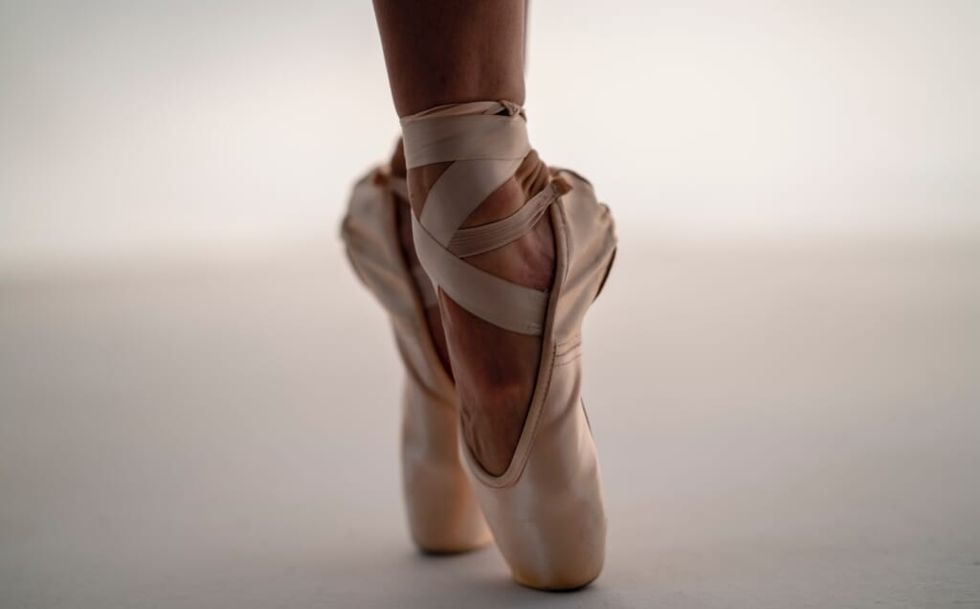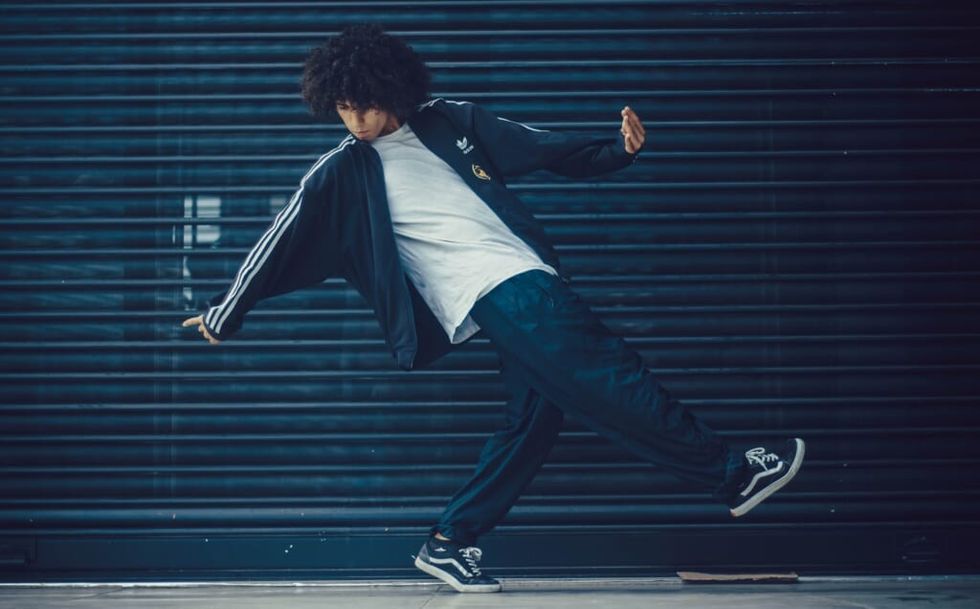Whether you enjoy dancing or not, this activity isn’t something most people do on a regular basis. In fact, when most people think about dancing, what often comes to mind are memories. Memories of ballet or tap classes as a kid, dancing at weddings, or hopping around in our bedroom while blasting favorite tunes.
But dancing doesn’t need to be relegated to childhood instruction, special occasions, or teenaged angst. Or to professional or skilled dancers. In fact, it’s an enjoyable form of exercise that offers both physical and mental health benefits. Even better, anyone can do it. Really! You don’t have to be Baryshnikov or even simply a “good” or “decent” dancer to reap the huge benefits—and thrill—of dancing.
RELATED: Why Do People Love to Surf? Because It’s Incredible for Your Body and Mind
All you need to do is get up and dance. Read on to learn more about how dancing improves your well-being—both body and soul—and why you should put on some music and start! Dancing offers a whole host of benefits to both the mind and body. Stress relief, exercise, and pure fun top of the list. But that’s just the beginning.
However, some people worry they aren’t a good enough dancer or that they won’t do it “right.” But the truth is that it really doesn’t matter and isn’t even true. Anyone can dance, all it takes is the desire. The key is letting go and just enjoying moving to the music, in whatever way you choose.
Dancing can be tailored to your mood, physical fitness level, location, and goals. Once you start dancing, you’ll likely quickly leave any worries you have behind. And whether you dance daily or just once in a while, a few steps in, you’ll start enjoying the benefits to your well-being.
Mental Health Benefits of Dancing

One awesome thing about dancing is that it embodies fun. Essentially, its underlying spirit is joyful, unabashed, gleeful fun. So, it’s really hard to dance without starting to smile. Sure, some curmudgeons out there might manage to keep a grimace on their faces while cutting the rug. But if you truly give it a chance and meet dancing with an open mind (and heart), the joy is likely to find you—and take hold.
In fact, dancing promotes the release of endorphins— feel-good hormones that boost well-being, calm, centeredness, and happiness.
RELATED: Weight Loss Motivation Tips to Keep Your Lifestyle Goals on Track
Dancing brings on relaxation and increases positive energy, self-confidence, and social connection. It helps to build mind-body connection, relieve stress, and wash away loneliness. This activity is also a great way to enjoy music. And while solitary dancing offers numerous benefits, from simple fun to effective coping to release worry and stress, dancing in public provides the pluses of social engagement, camaraderie, and group energy. Dancing can also help connect you to positive moments from your past, filling you with nostalgia and making you feel younger than you are.
Studies show that dancing has the power to lift the mood, too, easing anxiety, sadness, or depression. Research has also found that dancing can improve interpersonal skills, social skills, self-esteem, and life satisfaction. In fact, there is even a type of therapy that uses movement to help ease psychological distress. Called dance or movement therapy, according to the American Dance Therapy Association (ADTA) this form of treatment can “promote emotional, social, cognitive, and physical integration of the individual.”
Additionally, research has found that dancing can help to prevent and ease symptoms for those living with such conditions as dementia, Parkinson’s disease, chronic pain, and a variety of mental health conditions. Dance combined with music therapy can also treat a variety of mental health and behavioral and social issues.
Physical Health Benefits of Dancing

First and foremost, dancing is a physical activity that will improve the body’s fitness level—while also having so much fun that you’re likely to forget that it’s exercise. Regular dancing can lead to a more toned, trim, and fit body, as well as overall weight loss.
Some key physical health benefits of dancing include enhancing the following:
- Agility
- Balance
- Cardiovascular fitness
- Coordination
- Flexibility
- Lung health
- Pain threshold
- Stamina
- Strength
- Weight loss
Regular dancing can take the place of weekly or daily workouts. Depending on the intensity of the dancing you’re participating in, you will burn more or less calories. But as long as you’re moving, you’re getting the benefits of movement. And if you’re tracking your steps, you’ll likely tap into a wellspring during a bout of dancing as you’re moving your feet every which way, likely without even noticing.
RELATED: How Do SMART Goals Help With Weight Loss?
Additionally, studies show that regular dancing not only improves physical fitness but it can also increase mobility and reduce the need for pain medication in those with chronic pain from such issues as knee pain, arthritis, and hip discomfort
Types of Dancing

There are many types of dancing, including ballet, tap, jazz, modern, hip hop, breakdancing, and just tapping your feet or going with the flow. Choose whatever style resonates most with you—or try them all. Or simply move your body in space to music.
You can dance with a partner, on your own, or with a group. Dancing can also be accommodated to a huge range of fitness levels. Whether you’re a fitness nut, out of shape, or somewhere in between, dancing is something everyone can do. You can dance for a few minutes at a time or for hours. You can dance as a workout (either casually, self-designed, or via a workout class) or just for pure enjoyment.
You can dance slowly, with small steps and gentle movements. You can dance in a fast-paced, intense way. Your dancing can be graceful, beautiful, fluid, timed perfectly to the music, or exciting to watch. Or you can simply move, maybe awkwardly, maybe not. But who cares? The point is to have fun, feel the music, and just go.
RELATED: Physical Health and Wellness: How to Hack Your Own Body with Exercise, Food and Sex
You can do high-intensity dancing, with jumping, stomping, turning, spinning, leaping, and swaying. You can even dance from a chair. It’s up to you if you leave the dance flow dripping with sweat or just dewy. Either way, you’ll likely feel exhilarated and happy.
Beyond the joyful fun, dancing can be so many other things, too. Dancing can be primal, physical, emotional, sensual, energizing, relaxing, intimate, social, nostalgic, and more. Dancing can center you to the exact time and space you’re in. It can help you feel mindful and present or transport you elsewhere. Dancing can be dreamlike, fluid, flexible, and unstructured. Or it can be choreographed, purposeful, and dramatic.
When and Where to Dance

Dancing is often associated with a party activity, whether enjoyed while clubbing, at official dances, or weddings. But you don’t need a special occasion to enjoy this activity. In fact, all you need to do is put on some music and start moving along with it. You can dance just about anywhere, too. In your house, your yard, at a gym, a club, a ballroom, a party space, a park, or even in the street. You can take organized dance classes, in person or online, or grab some friends and just dance.
Overcoming obstacles to dancing
Many people feel a bit uncomfortable and/or stressed that their dancing is subpar. Aim to let those feelings go! Or just dance in a space without windows or in the dark. The key is to just start, as once you start moving, especially to songs you love, your self-consciousness is likely to melt away.
Also, don’t worry if you think you aren’t fit enough to dance. Or if you’ll look weird, get sweaty, or your body isn’t “good enough.” Everyone and every body looks beautiful when joyfully moving. And you don’t have to be dancing fast or any certain way. Even if you are out of shape, you can likely step from side to side. Just start out slowly and see what happens, following what feels good.
Match your music to your mood
Pair music you dance to with your mood—or the mood you’re hoping for. So, if you want to feel exhilarated, select upbeat music to dance to. If you’re feeling romantic, pick sexy songs. If you’re sad, swaying to soulful tunes can help you work through your feelings. If you want to celebrate, turn on the party tunes. Essentially, there’s a song for every emotion and context and when you dance (and sing) along, you get to go along for the ride.
Key Takeaways

Dancing is a physical activity we often forget about in our daily lives. But it’s well worth giving it a try on a regular basis. Not only is dancing a great form of exercise, but it also offers immense benefits for the mind, body, and soul. The bottom line is that dancing promotes positive mental, spiritual, and physical health. So, what are you waiting for? Grab your dancing shoes (or kick them off), turn on your favorite tunes, and start dancing!
KEEP READING:
Train Your Brain to Shed Distracting Habits and Concentrate Better
Credit: Source link



